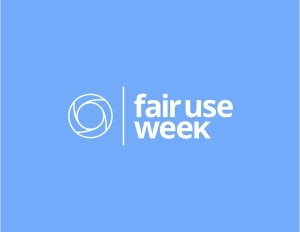Codes of Best Practice for Fair Use

Fair use is a part of the U. S. copyright law that helps us build on the culture and the knowledge that has come before us. Fair use sets conditions that allow us to make use of copyrighted material without permission from the copyright holder. We use fair use in news, criticism, scholarly writings, teaching, film making, art, poetry, music and more. We use it every day, and much of what we do cannot be done without it.
However, a considerable amount of uncertainty exists over the application of fair use. The Fair Use Fact Sheet from the U.S. Copyright office states, “The distinction between what is fair use and what is infringement in a particular case will not always be clear or easily defined. There is no specific number of words, lines, or notes that may safely be taken without permission.” This may be true , but if we end the conversation there, we are missing the spirit of what fair use is designed to do. Fair use is meant to be part of our laws that help “to promote the Progress of Science and useful Arts“. Yet, when someone decides not to create or use a work because of uncertainties about how fair use applies, then creativity is potentially stifled or self-censored rather than promoted.
Recognizing that additional conversation was needed about best practices for applying fair use within a given field or discipline, The Center for Media and Social Impact (CMSI) initiated conversations between legal experts and professionals within specific fields, to uncover a shared understanding of professional practices around fair use within a community. Exposing this understanding via Codes of Best Practice documents provides each community with a clear set of practices for the community itself, insurers and funders, and courts to consider when making fair use decisions. Links to some of the Best Practices documents are listed below:
- Documentary Filmmakers’ Statement of Best Practices in Fair Use
- The Code of Best Practices in Fair Use for Media Literacy Education
- Code of Best Practices in Fair Use for Poetry
- Fair Use Best Practices for the Visual Arts
- Code of Best Practices in Fair Use for Academic and Research Libraries
- Statement of Best Practices in Fair Use of Collections Containing Orphan Works for Libraries, Archives, and other Memory Institutions
- Code of Best Practices in Fair Use for Online Video
- Set of Principles in Fair Use for Journalism
- Statement of Best Practices of Fair Use in Dance related Materials
The fair use section of the CMSI website provides a wealth of resources including links to best practices, FAQs, blog posts and featured topics. For more information about fair use, check out the following resources:
Abdenour, J. (2014). Documenting fair use: Has the Statement of Best Practices loosened the fair use reins for documentary filmmakers?. Communication Law & Policy, 19(3), 367. doi:10.1080/10811680.2014.919813
Aufderheide, P., & Jaszi, P. (2011). Reclaiming fair use : how to put balance back in copyright. Chicago ; London : The University of Chicago Press, c2011.
Falzone, Anthony and Jennifer Urban. Demystifying fair use: The Gift of the Center for Social Media Statements of Best Practices, 57J.Copyright Soc’y U.S.A.337 (2009), Available at: http://scholarship.law.berkeley.edu/facpubs/1228
Jogan, J. (2012). Fair Use in an Evolving Copyright Environment. Computer & Internet Lawyer, 29(11), 22-34.
Olson, K. K. (2014). The Future of Fair Use. Communication Law & Policy, 19(4), 417. doi:10.1080/10811680.2014.955765